Vibrant Hong Kong, 'Pearl of the Orient'
Bruce Connolly, a writer and photographer from the United Kingdom, has been living in China for 36 years. He has traveled across much of China, and he has photographed the country through its incredible changes over the past few decades. In this article, he writes about his recent journey to Hong Kong Special Administrative Region.
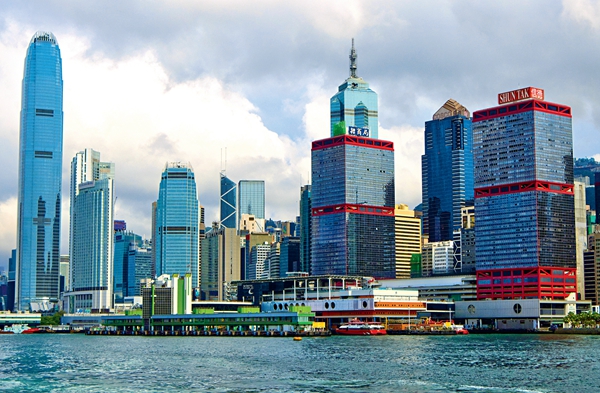
To see a landscape, to understand something of a country the size of China, there is no finer way than going by train. In 1987, I travelled overland by rail from Scotland, my homeland, to Hong Kong. One of the world's great railway journeys, a mesmerizing way to appreciate Europe morph into Asia. For a geographer like myself, it was almost like watching a textbook come alive, such were the landscapes, many different peoples, remote communities and more. For me it became my introduction to China.
In 1987, it took around 35 hours (two nights) from Beijing to Guangzhou, by green train, but what a journey! I spent many hours looking out as China slowly passed by. A country both rural and urban so different in terms of development from today. A 'Through Train' carried passengers onward from Guangzhou towards Hong Kong's Hung Hom Station.
Returning recently to Hong Kong, I could easily have flown, there are several flights daily, however a train journey would offers experiences not possible by flying. It was a chance to relive memories of 1987, to look at and compare China today. I would also travel on the reintroduced daily high-speed train service directly to Hong Kong. Since August 2008, I have followed the ongoing development of China's high-speed rail network, one of this country's greatest recent achievements. It seems incredible that a distance of 2,397 kilometers could be covered in just 8 hours 31minutes. Yet that 16-coach Fuxing train departed Beijing West Station at 10:00 a.m., arriving Hong Kong Kowloon West Station 6:31 p.m. exactly on time.
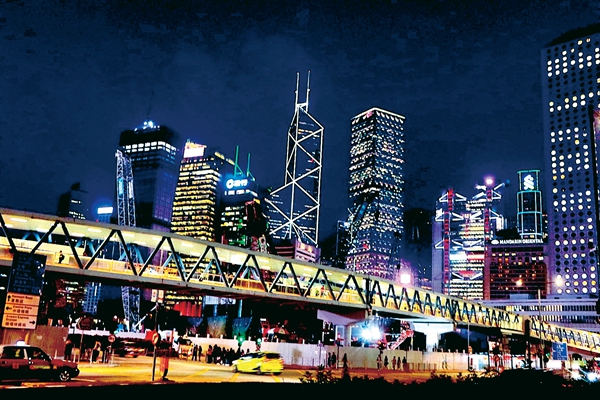
This high-speed line runs south through central China, well away from the densely populated lands of the eastern coasts. There were however several large cities including Shijiazhuang, Zhengzhou, Wuhan, Changsha and Guangzhou. It also crossed two of China's great rivers, Yellow River and Yangtze River.
China's climatic patterns go from distinctively continental in the north to sub-tropical, humid as we headed south. It was fascinating watching how the northern agricultural lands of extensive grain cultivation gradually gave way to a more intensive landscape of rice paddies and fish ponds. Similarly the number of rural villages steadily increased. North and south of Wuhan, the route however wound through lightly populated, forested hills.
Surprisingly the final section from Shenzhen North Station into Hong Kong was actually through a very long tunnel. Suddenly we emerged out at Kowloon West, more reminiscent of a large, modern airport than a railway station. From there a metro carried me across to Central on Hong Kong Island. I had arrived in a city affectionately known as the "Pearl of the Orient." Emerging out onto a public square, it was early evening, I sat for a while admiring the skyline including stunning architecture such as 315-meter-tall Bank of China Tower designed by late architect I.M.Pei (1917-2019), opened in 1990.
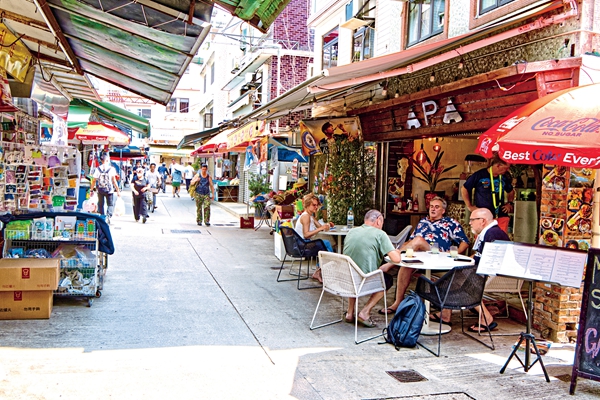
Hong Kong is a gateway from the Pearl River to South China Sea. It's natural harbor, sheltered and deep, is one of the world's finest. Indeed the city's name, in Chinese, Xianggang, refers to Fragrant Harbor.
After an absence of many years I had the opportunity to finally return south, it felt good to be back. The Royal Geographical Society of Hong Kong invited me down, to give three talks on my extensive travels through China. It was a particular joy to share some of those experiences going back to 1987. My audiences were both Chinese and Western residents with whom it was a pleasure to interact, including a group of international senior school students.
In 1987, I had come upon a modern city so different to any other I had seen on my transcontinental journey. It was stunning then to look from Kowloon across Victoria Harbor towards the high-rise skyline rising up lower slopes of The Peak. I realized that some of Hong Kong seemed familiar. The crowded, narrow streets, electric tramcars, iconic cross-harbor Star Ferry were images that appeared in my text books back in Scotland. It was a fascinating city then and as I would discover, it still is.
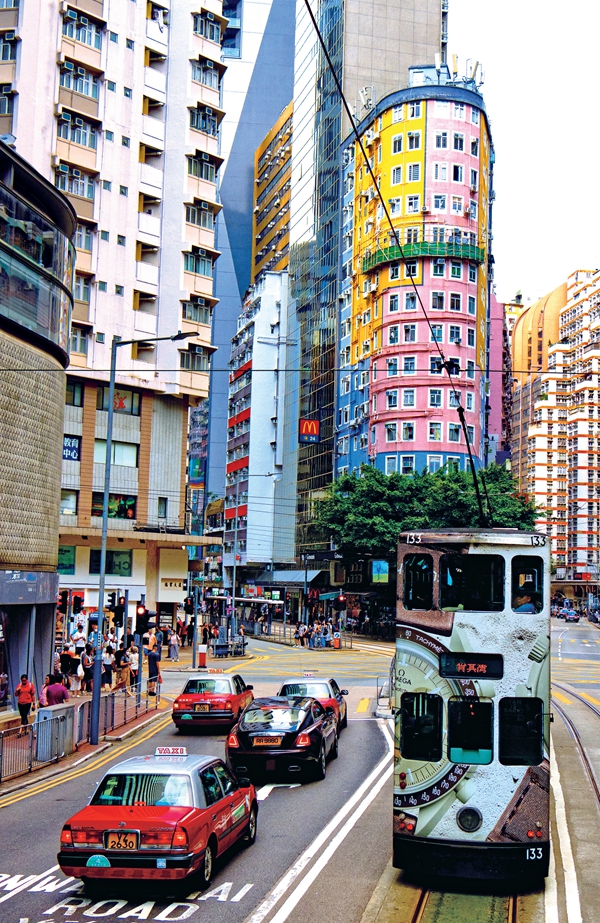
In the early 1990s, living in Guangzhou, Hong Kong became my gateway to China, most international flights would arrive there. I would head across into Guangdong Province by train, bus or even boat. Increasingly during those days I got to know more about the city. Hong Kong had grown, partly through its role in international trade, particularly with container shipping and financial services. It had been a major player in the early development of Shenzhen through business knowledge and relocation of factories. Hong Kong investors played an important role during China's domestic economic transformation since the late 1970s through to today.
The close relationships remain obvious such as the number of people commuting both ways to and from cities such as Shenzhen and Guangzhou. Indeed it is possible to foresee the entire Pearl River Delta area emerging as a regional integrated megalopolis with Hong Kong a key player.
Over the years I witnessed the steady growth and modernization of Guangzhou including the Pearl River Delta. Essential infrastructure construction included the high-speed rail network today linking Hong Kong with cities across China. While many surrounding urban centers have rapidly transformed into modern metropolises, Hong Kong has retained its special identity and place in the region.
Over eight days I explored some of the city, particularly around Hong Kong Island. However, the humidity was much higher than what I normally experience in Beijing. I also realized that the island, in particular, rises very steeply from the level areas around the coast. I was very impressed by the infrastructure construction allowing urban expansion up the slopes. With very little flat land for farming, it is one of the most densely populated places on earth, particularly around Kowloon and parts of the main island. Yet, across its uplands are extensive countryside parks.
Hong Kong boasts some futuristic architecture — some I remembered from earlier days such as 1986 completed, 183-meter-tall Hong Kong Shanghai Bank headquarters. However there has been considerable, ongoing construction enhancing the city's overall feeling of modernity, yet some combining principles of traditional feng shui in design.
A feature of buildings, particularly within the central business district are interconnected walkways allowing people to stroll extensive distances without having to be at street level. The city feels increasingly high-tech with many retail outlets and coffee shops today cashless. I regularly used a prepaid Oyster card not only on public transport such as the tramcars and island ferries but also in many shops.
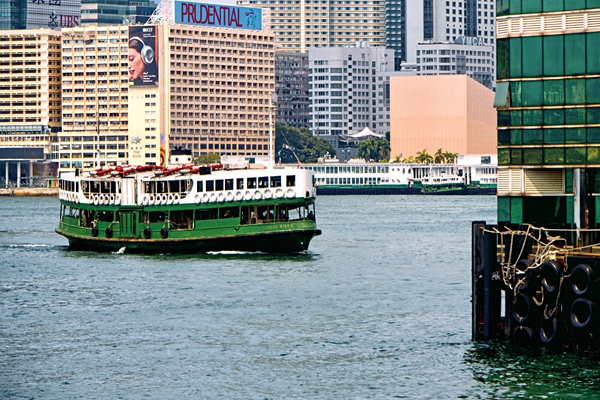
ATMs accepted Union Pay cards dispensing both Hong Kong Dollars and Renminbi. A helpful feature, my smartphone automatically switched to China Mobile HK — I could use my phone and send WeChat messages. Increasingly I was hearing Putonghua (Mandarin) spoken, a reflection of the increasing number of visitors from the mainland now visiting. Even taxi drivers could understand my Chinese!
Tramcars have been operating since the early 20th century and today remain a much treasured legacy, appreciated by both locals and visitors alike. To sit upstairs on such vehicles provides a fascinating view of everyday life and architecture along the routes.
Star Ferry have been operating since 1888 and remain very popular with visitors wishing to cross the harbor from Kowloon to Hong Kong Island. The ferry brings back romantic memories from earlier movies, indeed the ferry is one of the beloved icons of the city.
A delight which is worth doing is to visit the islands such as Lamma Island and Cheung Chao. Mostly car-free resulting in very peaceful living so different from living in downtown, the boat journeys out from Central provide stunning view of Hong Kong's skyline. Each island has a small town or village, today offering some delightful bars and restaurants with views over bustling fishing harbors.
Walking around the city, I could feel its vibrancy and how it has remained a major center for international business and commerce. With its encounters between East and West, Hong Kong is arguably one of the most cosmopolitan cities in Asia. Today it remains economically motivated. This was something I could feel along the busy streets of Central and Causeway Bay. It is noticeably a mixed society, indeed a "melting pot" of peoples including not only Chinese and Western but also from several Asian countries.
It is fascinating to witness a plethora of long-established, open-fronted Chinese shops spread along bustling thoroughfares that have retained their original street names. So much today in Hong Kong I could recognize from my earlier visits. Beautiful European-style churches sit side-by-side with Chinese temples where colorful, traditional, religious festivals continue in timeless scenes. Islamic mosques, particularly around Kowloon are another reminder of its population diversity. This has also resulted in an exciting range of international culinary experiences as I would experience during my many stays in Hong Kong.
Geographically Hong Kong may at first appear peripheral to major mainland cities, however it has long been and will remain as an important location for China due to its trading position with much of southern Asia and indeed the world.
Photos by Bruce Connolly
(Women of China English Monthly July 2023 issue)
Please understand that womenofchina.cn,a non-profit, information-communication website, cannot reach every writer before using articles and images. For copyright issues, please contact us by emailing: website@womenofchina.cn. The articles published and opinions expressed on this website represent the opinions of writers and are not necessarily shared by womenofchina.cn.








.jpg)

 WeChat
WeChat Weibo
Weibo 京公网安备 11010102004314号
京公网安备 11010102004314号